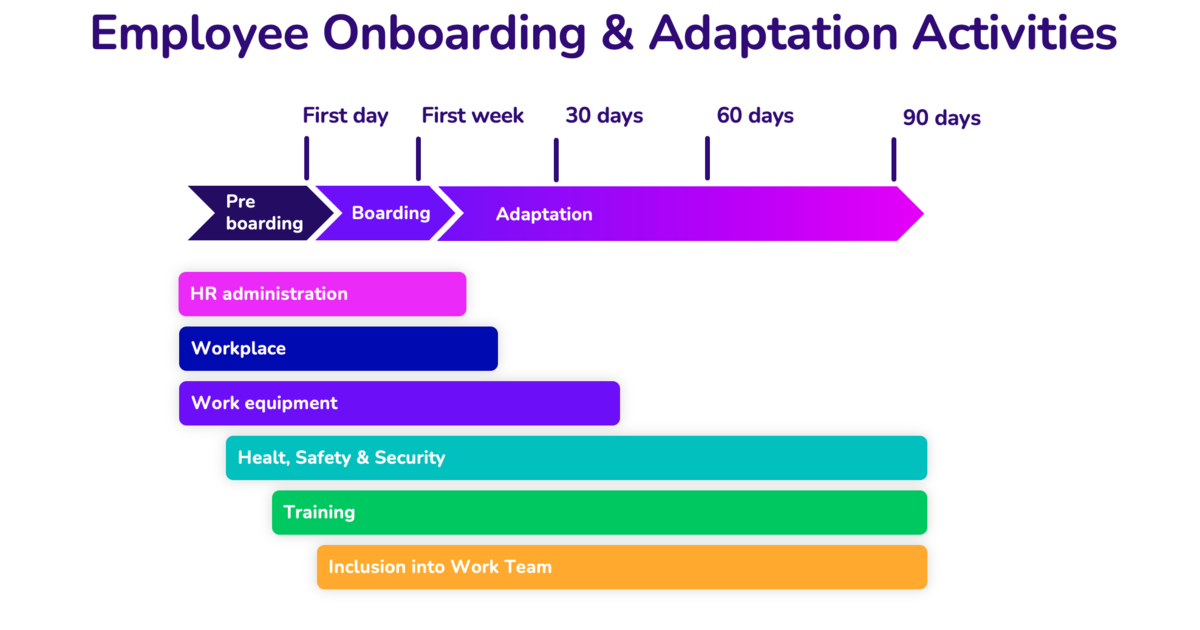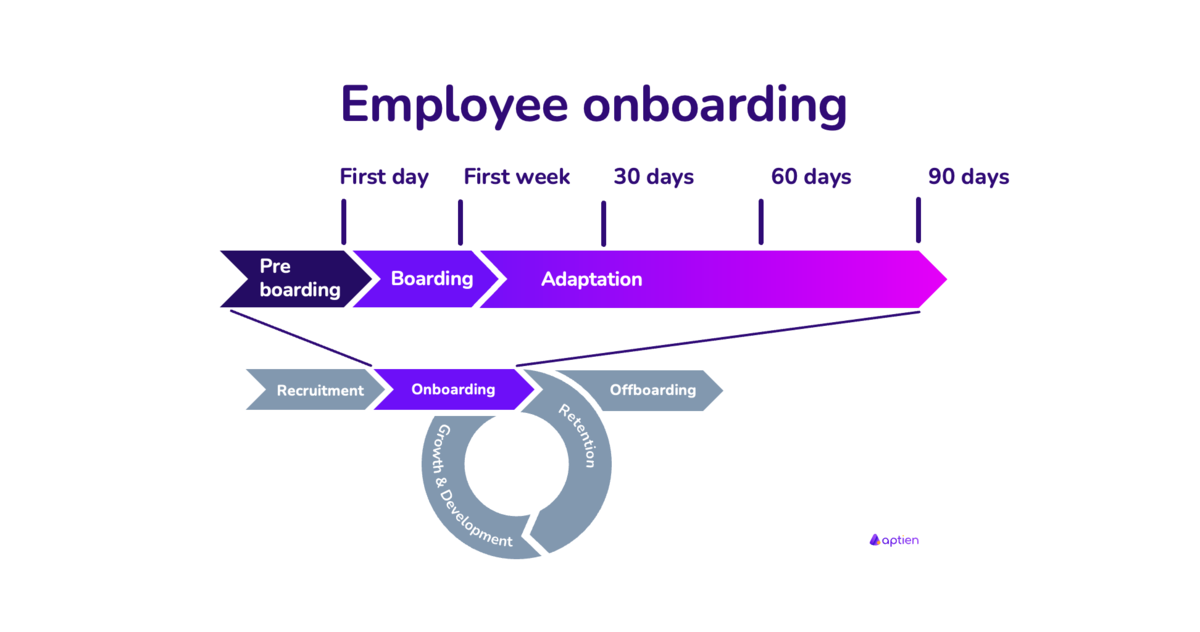This article is for HR managers in charge of employee onboarding and full integration.
Employee onboarding is a process that begins during the job interview and ends when the new employee is fully settled and adjusted to their new job.
What Employee Onboarding Means for Small and Growing Businesses?
No matter the size of the business, successfully onboarding a new employee is essential. Starting a new job is a critical moment. By the end of the onboarding process, the new hire should be fully prepared to perform their job and actively participate in all company activities. The initial steps, along with proper preparation of their workspace and equipment, shape their first impression of the role. Aptien will streamline communication between the employer and employee right from the start. The business needs to manage the employee’s onboarding efficiently while minimizing administrative tasks for everyone involved.
- The business needs the new employee to quickly adapt to workflows, the work environment, and the team to become fully productive
- It’s important to handle not only administrative paperwork but also training, distribution of work tools, and workspace setup
- Onboarding is typically overseen by HR, working closely with IT and facilities teams
What a Company Needs to Manage When a New Employee Starts
Employee onboarding—including providing necessary tools and equipment, introducing new hires to their team and workplace, and completing all required paperwork—should be handled with minimal administrative hassle. Aptien helps you create a clear checklist of everything that needs to be done, ensuring all essentials are covered so new employees can quickly get up to speed. The onboarding process focuses on five key areas:
- Administrative & Compliance Setup – paperwork, contracts, legal requirements
- Performance & Role Onboarding – setting goals, expectations, reviews
- Orientation & Training – knowledge sharing, compliance training, skill development
- Equipment & Access Setup – tools, devices, system access
- Social & Cultural Integration – team building, mentorship programs, company culture
Who is Involved in Employee Onboarding?
Onboarding is not just the responsibility of the HR department. The onboarding process includes all activities from the moment the decision to hire a candidate is made until the employee is fully settled in their workplace and adapted. It is a very complex process that involves not only the HR specialist but also many other people within the company. The entire onboarding process includes tasks performed not only by the employee and HR specialist but also by other people in the company. The people most commonly involved in the onboarding process are:
- HR Specialist, responsible for all formalities, documentation, employment contracts, and other paperwork
- Office Manager or another person responsible for issuing work tools, keys, and other access to the company
- IT staff who provide the computer and set up access to company systems and applications
- Direct Supervisor of the employee, who introduces them to the work environment including the initial meeting
From Hiring to Full Integration
The onboarding process includes all activities from the moment a candidate is hired until the employee is fully settled in their role. It is a very complex process that involves not only HR but also many other people within the company.
The employee onboarding process is divided into three main parts:
- preparing for the onboarding itself (pre-onboarding)
- the employee’s first day
- employee adaptation during the first weeks and months (adaptation, integration)
Because this is a very complex process, the organization must carefully coordinate all involved parties. It is therefore important to have all onboarding steps planned and under control.
1. Preparation for the employee's arrival (pre-onboarding)
Onboarding preparation is important to ensure that everything is ready by the employee's first day. It includes both the preparation of documentation and the preparation of the working environment.
- Sending welcome letter
- Preparing the employment contract for signature and other new hire paperwork
- Completing mandatory legal and payroll forms (e.g., I-9, W-4)
- Setting up employee access to company systems and applications (e.g., email accounts)
- Preparing passwords, access cards, and keys
- Preparing necessary work tools and supplies
- Preparing the workspace
- Notifying future co-workers of the new hire's arrival
2. Employee's First Day(s)
The first day of a new employee is crucial. Everything must be prepared so that the employee has everything they need, from administrative and legal compliance to their specific job role and responsibilities. Typically, on the first day, work equipment is issued, and new employees are familiarized with the work environment and processes.
- Complete all necessary paperwork
- Familiarize the employee with key company processes, procedures, and rules
- Review the detailed job description with the employee
- Provide access and login details (keys, access cards, logins, passwords, etc.)
- Issue work equipment, personal protective equipment (PPE), and tools (laptops, machinery, etc.)
- Tour the workplace with the employee
- Set up their work environment and system permissions
- Provide training on the work environment, tools, and safety procedures
- Introduce the employee to their coworkers
- Familiarize the employee with formal and informal company practices and culture
- Discuss company strategy
3. Employee Onboarding, Integration, and Development
Integration usually happens during the first three months after a new employee starts. It is typically planned for the first week and the first three months (commonly at 7, 30, 60, and 90 days). Depending on the role’s complexity, the overall adjustment period might be longer and overlaps with the employee’s ongoing development.
- Training on all job tasks
- Completing training related to job responsibilities
- Introducing the employee to company policies, procedures, and guidelines
- Helping the employee adapt and socialize within their new team, including meeting key colleagues and supervisors
- Getting familiar with other important contacts inside and outside the company
- Setting personal development goals
- Holding review meetings (typically at 7, 30, and 90 days)

